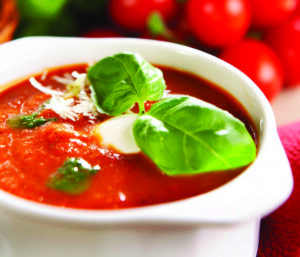
by Specialdocs Consultants | May 16, 2024 | Mental Health, Patient News
From unmentionable to oft discussed, American attitudes toward mental health have made a seismic shift over the years. It’s heartening to see recent polls showing 87% of U.S. adults agree having a mental health disorder is nothing to be ashamed of, and 86% saying people with mental health disorders can get better. Seeking help from a therapist has become normalized, due in part to an epidemic of mood disorders among Gen Z.
“It is this generation that may, in fact, finally break the stigma around mental health,” says Ken Ginsburg, MD, Children’s Hospital of Philadelphia, “freeing millions of Americans who have suffered terribly and silently to seek help.”
Mental healthcare has gradually worked into the mainstream, says concierge psychologist Dr. Rebecca Johnson Osei. “Just a generation ago, people were happy or angry and we didn’t label many feelings beyond that. Now there’s a lot of positive talk about therapy on tv and in films, which begets more conversations. The language in children’s literature has also changed to teach about feelings, so youngsters will be great stewards of this approach when they’re adults.”
Osei says some are beginning to view therapy as an opportunity to become better versions of themselves. “It’s gratifying to work with young couples who want to be in a good place emotionally before they get married, and people looking to address issues from their own childhood before they have children.”
Does that pave the way for annual mental health checkups? “The sooner you identify a problem, the easier it is to manage,” says Osei. “We can’t prevent everything, but we can listen to our minds the same way we listen to our bodies and seek help at the first sign of troubling symptoms.”

by Specialdocs Consultants | May 16, 2024 | Mental Health, Patient News
Age of Innocence – Or Anxiety for Today’s Kids?
From loud claps of thunder to dogs that can bite, a child’s world is filled with new, sometimes scary experiences. However, if fears can’t be managed with reassurance or distraction and persistently interfere with daily activities, your child may have an anxiety disorder. These most common childhood mental health disorders are now regularly screened for in children ages 8-18, and include:
- Generalized anxiety disorder: excessive worry about everything that’s happening in their world; focus on failures rather than successes.
- Social anxiety disorder: intense fear of doing or saying the wrong thing; shy, withdrawn, self-conscious; avoids social and performance situations.
- Panic disorder: suffers from unexpected panic attacks, described as “going crazy” with severe feelings such as “I feel like I’m going to die.”
- Separation anxiety disorder: worries about something bad happening when not with caregivers, difficulty sleeping on own, excessive homesickness; may avoid playdates, sleepovers.
- Specific phobias: intense, irrational fear of a specific object or a situation such as animals, storms, heights, water, blood, the dark, and medical procedures.
- Selective mutism: inability to talk when faced with new people or places, but have no trouble speaking in situations where they feel comfortable.
Symptoms of Anxiety in Children
Anxiety in children manifests in numerous ways: crying, tantrums, clinging, headaches, stomach aches, shortness of breath, sleep problems, under- or overeating, and poor school performance.
Treatment of Anxiety in Children
Exposure and response prevention (ERP) therapy – exposing children to the things that trigger their anxiety in structured, incremental steps and teaching them how to master their fear – has proven very effective. When appropriate, ERP therapy can be combined with anti-anxiety medications (SSRIs).
Fear Factor: Helping Children Understand and Manage Their Fears
The frequently experienced fears shown below can often be managed with education, exploration through play, and “bibliotherapy,” the use of reading aloud to children to address their worries. In a pilot study of a four-week bibliotherapy intervention for young children with persistent and interfering nighttime fears, clinically significant change in anxiety severity was reported. Additionally, increases in the number of nights children slept in their own bed, and decreases in child-reported nighttime fears were observed.
Try it: Magination Press, the children’s book imprint of the American Psychological Association, offers a large selection of literature designed to help families navigate life’s challenges. For example, in Booma Booma Boom, a boy guides his stuffed animals through a thunderstorm using sensory-based mindfulness to ease fear, find quiet, and understand that storms also bring good things, such as calming rain and water for plants.
| Age Years |
Common Fears |
| 1 |
Separation, falling, animals/insects, toilet training, bath |
| 2 |
Separation, noises, toilet training, bath, bedtime |
| 3 |
Animals/insects, bedtime, monsters/ghosts, getting lost |
| 5 |
Animals/insects, monsters/ghosts, divorce, getting lost, loss of parent |
| 7 |
Separation, noises, falling, bedtime |
| 9 |
Social rejection, war, new situations, adoption, bodily injury, school performance |
| 10 |
World disasters (tsunamis, earthquakes, sinking ships) |
| 12 |
Falling, burglars, bodily injury |
| 14 |
Adoption, burglars, injections, sexual relations |
| Older Teens |
Social affairs, death, and illness |
Adapted from: UptoDate Overview of Fears and Phobias in Children and Adolescents
Sources: Child Mind Institute, CDC, Anxiety and Depression Association of America (ADAA), UptoDate

by Specialdocs Consultants | May 16, 2024 | Mental Health, Patient News
Drugs, Drinking & Depression: The Kids May Not Be Alright
Every generation has seen their share of thrill-seeking teens acting out and making dubious choices regarding drugs and alcohol. “There’s a normative aspect to risk taking at this age,” assures clinical psychologist Gilly Kahn. “It’s hardwired into our systems to allow us to learn our place in the world.”
In the 2020s it’s increasingly likely that these kinds of activities are also being used by Zoomers (born between 1997 – 2012), particularly the older ones, to temporarily ease their depression and anxiety. New research from Harvard shows that, based on well-established measures used to screen for generalized anxiety disorder or major depressive disorder, 42% of people ages 18 to 25 reported being either anxious or depressed – almost twice as many as the teens surveyed. Additionally, more than half said their lives lack meaning or purpose.
If there’s a silver lining to be seen here, it may be the respondents’ willingness to share their condition, unashamed and unafraid to reveal mental health issues. “Young adults these days may be more emotionally aware and articulate than any generation in American history,” wrote the researchers.
Like older people, symptoms of depression in young adults and teens can include:
- Diminished pleasure in things they used to enjoy
- Fatigue and sleep issues
- Anxiety
- Constant sadness
- Feeling worthless, guilty or restless
- Physical ailments such as headaches and stomach aches
- Significant weight loss or gain
- Difficulty concentrating
- Isolation
- Thoughts of death or suicide
Dissimilar to older adults, they may also do poorly at school, be more apt to ‘act out’, and feel irritable, negative and argumentative.
Effective ways to treat depression include cognitive behavioral therapy to help change negative patterns of thinking and behaving, and interpersonal psychotherapy to develop healthier relationships at home and school. An anti-depressant drug (selective serotonin re-uptake inhibitor or SSRI) may also be prescribed when appropriate.
Most importantly, Kahn advises parents and grandparents to keep the lines of communication open by taking every opportunity to talk about emotions and ‘actively listen’. “Sometimes parents are completely surprised by a call from the school guidance counselor who alerts them to the fact that their teen was Googling information about depression or suicide. But teens are really good at trying to cover up how they feel and may not want to burden family members with their sadness or anxiety,” she says.
Consistently expressing unconditional love and acceptance, even if it seems unappreciated, is key. “Teens may give you attitude or not show gratitude in the moment, but don’t stop because it has a huge positive impact on their mental wellbeing,” says Kahn.
Essential Coping Skills for Teens and Young Adults Dealing with Anxiety and Depression
- Understand. Put your emotions in perspective, gather your thoughts, and problem solve.
- Distract. Take time away from a problem and stop spiraling; you’ll have a clearer mind when you return to it.
- Move. Release endorphins to increase a feeling of well-being while decreasing cortisol (stress hormones).
- Ground. Reconnect with your senses, be present in the moment.
- Connect. Tap into your support system, engage in caring for others in the community.
`Adapted from: Harvard GSE Making Caring Common Project
Learn more from resources dedicated to supporting mental health:
Anxiety & Depression Association of America offers extensive information about anxiety, depression, PTSD, suicide and how to join free peer-to-peer support communities.
Cogenerate is an organization that fosters intergenerational collaboration through diverse programs, events, and media initiatives.
DoSomething is one of the largest nonprofits dedicated to providing opportunities for young people to take action on various pressing social issues.
Jed Foundation is a nationally recognized nonprofit that works to protect emotional health and prevent suicide among teens and young adults. Provides comprehensive resources to help young people prioritize their mental health while managing important life transitions.
Wondermind is a popular online resource for expert advice, candid conversations, and tailored content to help young people put their mental fitness first every day. It also has a “filter by
feels” feature, allowing you to find content specific to how you feel.

by Specialdocs Consultants | May 16, 2024 | Mental Health, Patient News
In Real Life (IRL), Can We Protect Teens from the Emotional Impact of Social Media?
YouTube, TikTok, Snapchat, Instagram, Facebook, WhatsApp, X, Reddit, BeReal. A majority of American teens visit these social media platforms at least once daily, and 30% say they are on them almost constantly. Their ubiquity is unquestionable, and teens’ connection with them seemingly unshakeable, but the impact on emotional health is still being explored.
Recent reports found frequent social media use may be associated with changes in the developing brain, potentially affecting emotional regulation and impulse control. “In early adolescence, when identities are forming, brain development is especially susceptible to social pressures, peer opinions, and peer comparison,” according to the U.S. Surgeon General. Of particular concern is evidence linking social media use to body image dissatisfaction, eating disorders, poor sleep and depressive symptoms.
Also noted however, are the benefits of social media, which include positive interactions among teenagers who find an online community of peers with a common interest or identity. Polling has shown a majority of teens and parents gave social media high marks for connecting them with support in tough times, giving them a place to show creativity, and feeling more connected with friends’ lives.
To keep youngsters safe, experts advise a combination of limits, discussion and coaching around social media use. “When children are young, hold the reins tightly by establishing specific expectations and rules,” advises psychologist Gilly Kahn. “Build trust and loosen the reins as they get older to allow less supervision…but let them know you’ll tighten it up again if they break your trust in any way.”
While a proliferation of parental control apps are available, like Bark which sends notifications when alert words are used (e.g. drugs, suicide), Kahn notes: “These are considered really invasive by teens, and if they want to get on social media, they’re going to find a way to do it.”
Instead, start with a family media plan to set rules about online time, content boundaries, and not disclosing personal information. Continue to have age-appropriate conversations with youngsters about who they’re connecting with and how they’re spending their time online. Try and keep family mealtimes and in-person gatherings device-free to help youngsters build social bonds. Consider restricting the use of phones, tablets, and computers for at least an hour before bedtime and through the night to help ensure restful sleep. Finally, model positive behavior on your own social media accounts.

by Specialdocs Consultants | Feb 7, 2024 | Healthy Aging, Patient News
It’s not yet possible to stop the passage of years, but it might well be within our sights to combat the effects of aging, according to Michael Greger, MD, internationally recognized lifestyle medicine physician, author and nutritionist. Synthesizing years of research on the essential pathways of aging, Dr. Greger believes the process can be slowed down with lifestyle changes, and without pharmaceutical interventions. Below are some of his most interesting findings … please note that we always encourage you to check with your physician for individual guidance before adopting new health recommendations.
 Plant-based eating holds one of the most important keys to slowing biological aging, emphasizes Dr. Greger. Borne out in large studies from the National Institutes of Health/AARP and Harvard, replacing just 3% of daily calories from animal protein with plant protein was associated with a 10% decrease in risk of overall mortality. It may also help prevent Alzheimer’s dementia, an incurable disease. “There is a growing consensus that what is good for our hearts is also good for our heads, and high levels of blood cholesterol are recognized to be a major risk factor for Alzheimer’s. Switching to a healthy, whole foods diet lower in animal fats, eggs and dairy can help prevent arteries in the brain from becoming clogged with atherosclerotic plaque, which is thought to play a role in Alzheimer’s,” he explains. “It may even trump genetics, as seen in Nigeria, where the plant-predominant diet may be the reason for very low rates of Alzheimer’s disease among a population with some of the world’s highest rates of the Alzheimer’s gene. Genes may load the gun, but lifestyle pulls the trigger.” In studies of older adults, the benefits of a diet rich in dark green, leafy vegetables continues to emerge, associated with improvements in the brain’s processing speed and working memory, muscle mass and strength, and potentially helping prevent age-related macular degeneration.
Plant-based eating holds one of the most important keys to slowing biological aging, emphasizes Dr. Greger. Borne out in large studies from the National Institutes of Health/AARP and Harvard, replacing just 3% of daily calories from animal protein with plant protein was associated with a 10% decrease in risk of overall mortality. It may also help prevent Alzheimer’s dementia, an incurable disease. “There is a growing consensus that what is good for our hearts is also good for our heads, and high levels of blood cholesterol are recognized to be a major risk factor for Alzheimer’s. Switching to a healthy, whole foods diet lower in animal fats, eggs and dairy can help prevent arteries in the brain from becoming clogged with atherosclerotic plaque, which is thought to play a role in Alzheimer’s,” he explains. “It may even trump genetics, as seen in Nigeria, where the plant-predominant diet may be the reason for very low rates of Alzheimer’s disease among a population with some of the world’s highest rates of the Alzheimer’s gene. Genes may load the gun, but lifestyle pulls the trigger.” In studies of older adults, the benefits of a diet rich in dark green, leafy vegetables continues to emerge, associated with improvements in the brain’s processing speed and working memory, muscle mass and strength, and potentially helping prevent age-related macular degeneration.
 Activate autophagy, the body’s cellular recycling system, with regular aerobic exercise of moderate intensity, and daily consumption of spermidine, a compound found in foods including: beans, tempeh (made from fermented soybeans), white button mushrooms, mangoes, edamame, green peas, lentil soup, and in its most concentrated form in wheat germ. Also given the green light by Dr. Greger is coffee, for its abundance of polyphenol chlorogenic acid, an antioxidant thought to have a protective effect that is contained in all types of the beverage (decaffeinated, instant, and especially when brewed with a paper filter).
Activate autophagy, the body’s cellular recycling system, with regular aerobic exercise of moderate intensity, and daily consumption of spermidine, a compound found in foods including: beans, tempeh (made from fermented soybeans), white button mushrooms, mangoes, edamame, green peas, lentil soup, and in its most concentrated form in wheat germ. Also given the green light by Dr. Greger is coffee, for its abundance of polyphenol chlorogenic acid, an antioxidant thought to have a protective effect that is contained in all types of the beverage (decaffeinated, instant, and especially when brewed with a paper filter).
 Avoid French fries and chips, urges Dr. Greger, as the toxin acrylamide formed during the frying process may cause inflammation and inhibit autophagy; air fry potatoes instead. Also, put down the salt shaker and opt for salt-free seasonings or substitutes. “Cutting back on sodium appears to effectively make people more than a decade younger in terms of risk of premature death,” he says.
Avoid French fries and chips, urges Dr. Greger, as the toxin acrylamide formed during the frying process may cause inflammation and inhibit autophagy; air fry potatoes instead. Also, put down the salt shaker and opt for salt-free seasonings or substitutes. “Cutting back on sodium appears to effectively make people more than a decade younger in terms of risk of premature death,” he says.
 Minimize fish. Long viewed as a healthy choice, fish have become so contaminated with heavy metals, pesticides and other forever chemicals that despite their omega-3 fatty acids, there’s been a failure to consistently observe its beneficial effects, according to Dr. Greger.
Minimize fish. Long viewed as a healthy choice, fish have become so contaminated with heavy metals, pesticides and other forever chemicals that despite their omega-3 fatty acids, there’s been a failure to consistently observe its beneficial effects, according to Dr. Greger.
 Prevent bone fractures by focusing on strength and balance training. “The majority of age-related risk of bone fractures (85%) is due to falling, not osteoporosis, so addressing muscle loss may be more effective than the current focus on increasing bone mineral density with drugs,” says Dr. Greger. He cites multiple randomized trials showing a combination of resistance exercise to improve lower limb muscle strength and balance training can cut fracture risk nearly in half. And although boosting protein intake has been touted by others, Dr. Greger cautions: “If you put together all the randomized, controlled trials of adding extra protein to the diets of older men and women, you find no evidence that it increases muscle mass or strength, even in those with sarcopenia (excessive age-related muscle loss).”
Prevent bone fractures by focusing on strength and balance training. “The majority of age-related risk of bone fractures (85%) is due to falling, not osteoporosis, so addressing muscle loss may be more effective than the current focus on increasing bone mineral density with drugs,” says Dr. Greger. He cites multiple randomized trials showing a combination of resistance exercise to improve lower limb muscle strength and balance training can cut fracture risk nearly in half. And although boosting protein intake has been touted by others, Dr. Greger cautions: “If you put together all the randomized, controlled trials of adding extra protein to the diets of older men and women, you find no evidence that it increases muscle mass or strength, even in those with sarcopenia (excessive age-related muscle loss).”
Finally, he points to the reassuring fact that adopting just a few simple lifestyle behaviors – a diet rich in fruits and vegetables, maintaining a healthy weight, not smoking – adds years of life no matter when you begin. “A Harvard analysis of more than 100,000 men and women followed over decades showed that starting to eat and live more healthfully at age 50 appeared to translate into 12 to 14 years of extra lifespan, at age 60, an extra 8 to 9 years, and even starting at age 80 added more years. We all have the power to turn back the clock, starting right now.”
Eight Lessons from the Blue Zones
Blue Zones are areas across the globe in which populations live longer and better than average, identified by National Geographic fellow Dan Buettner, who explains: “There’s no magic bullet or pill, but rather a cluster of mutually supporting factors common to these centuries-old cultures whose people are making it to ages 90-100 without disease.”
- Plant-slant diet, as described elsewhere in this issue. Buettner’s common sense advice: “Sit down with a plant-based cookbook, identify a dozen recipes that you think your family would enjoy and cook them instead of going on a diet or spending money on a program. Also, eliminate soda pop, one of the unhealthiest parts of the American diet.”
- Eat until you’re 80% full. “And have your biggest meal first,” advises Buettner, “eat breakfast like a king, lunch like a prince and dinner like a pauper.”
- Family-first focus.
- Belonging: feeling connected to your community.
- Right tribe: surrounded by friends who support healthy behaviors.
- Natural movement throughout the day.
- Strong sense of purpose.
- Ability to de-stress.
The original Blue Zones ranged from Costa Rica to Sardinia. According to new research, these states closer to home are most likely to earn the moniker in the future: California, Minnesota, Utah, North Carolina, Massachusetts, Maryland, Virginia, Connecticut, Rhode Island, Colorado.

by Specialdocs Consultants | Feb 7, 2024 | Patient News
It’s called the Plenty Paradox: an affluent environment with easy access to substances or behaviors perceived as pleasurable has actually been a key contributor to our national mental health crisis. So posits Dr. Anna Lembke, Medical Director of Addiction Medicine, Stanford University School of Medicine, who has extensively researched and treated patients struggling to find the right balance in what she terms our “Dopamine Nation.”
Constant over-exposure to drugs, tobacco, alcohol, unhealthy foods, social media or other activities can cause a surge in dopamine, the primary neurotransmitter in our brain regulating our experience of pleasure, motivation and reward. “We all have a baseline level of dopamine, and there is enormous variability among individuals as to what triggers the release of additional dopamine in their brains,” she explains. Once that occurs, the brain will work to restore any deviation from neutrality.
Dr. Lembke explains: “The brain adapts to a pleasurable stimulus by tipping to pain, which is the comedown or aftereffect sensation. If we wait, this will pass and homeostasis is restored. But if we continue to use our drug or activity of choice, the initial stimulus of pleasure gets weaker and shorter, and the aftereffect of pain gets stronger and longer, changing the hedonic, or joy, setpoint over time. Now we need more not to feel good, but just to level the balance and feel normal…because when we’re in a state of dopamine deficit, classic symptoms of withdrawal such as anxiety, irritability, insomnia and depression and craving are experienced, along with a diminished capacity to enjoy previous pleasures.”
Noting that rates of anxiety and depression have increased most quickly over the last 20 years in the richest nations, Dr. Lembke says: “We’re living in a world where you can binge on almost anything – gaming, exercise, romance novels – because so much has become more reinforcing, potent, novel and accessible. It’s a real mismatch between the way we were initially wired to survive in an environment of scarcity and overwhelming danger, and our modern dopamine-rich ecosystem.”
An early intervention: the dopamine fast
With the caveat that her approach is not appropriate for all (e.g. those at risk of life-threatening withdrawal from opioids, or those who have unsuccessfully and repeatedly tried to stop on their own), Dr. Lembke shares the basics of her innovative “dopamine fast” to address compulsive overconsumption.
- Recall the quantity and frequency of your drug of choice, be it video games, cell phone use or cannabis, over the past week, going backwards in time. Identify your initial motivation for overconsumption (to have fun, to solve a problem, etc.) and consider if you now need more to achieve your objective.
- Abstain for 3 to 4 weeks. “Although it may feel as if the drug of choice is the only thing that gives you a break from difficult circumstances, realize that it may actually be making you feel worse, and the only way to know is to abstain completely for at least 3 weeks. Stopping sooner will mean you experience only the hard challenges of the first two weeks, and none of the rewards when homeostasis begins to be restored after that.”
- Maintain. During abstinence, learn to recognize triggers and create literal and cognitive barriers to press the pause button between desire and consumption. “With social media for example, you can delete apps, turn off alerts and create tech-free spaces in the home. Make a plan for how to integrate the habit back into your life as a useful tool while staying balanced, such as scheduling ‘intermittent fasting’ from your digital devices until you’ve accomplished specific tasks.”
- Hormesis. Dr. Lembke refers to a growing body of literature showing that exposure to initially painful experiences can result in increased resilience. “In our social media example, hormesis can be achieved by unplugging from our devices and doing things that may seem hard such as exercising, playing an instrument, writing a thank you note, even taking a cold shower,” she says. “Paying for the dopamine surge upfront may help boost motivation and positive mood without the big comedown.”






 Plant-based eating holds one of the most important keys to slowing biological aging, emphasizes Dr. Greger. Borne out in large studies from the National Institutes of Health/AARP and Harvard, replacing just 3% of daily calories from animal protein with plant protein was associated with a 10% decrease in risk of overall mortality. It may also help prevent Alzheimer’s dementia, an incurable disease. “There is a growing consensus that what is good for our hearts is also good for our heads, and high levels of blood cholesterol are recognized to be a major risk factor for Alzheimer’s. Switching to a healthy, whole foods diet lower in animal fats, eggs and dairy can help prevent arteries in the brain from becoming clogged with atherosclerotic plaque, which is thought to play a role in Alzheimer’s,” he explains. “It may even trump genetics, as seen in Nigeria, where the plant-predominant diet may be the reason for very low rates of Alzheimer’s disease among a population with some of the world’s highest rates of the Alzheimer’s gene. Genes may load the gun, but lifestyle pulls the trigger.” In studies of older adults, the benefits of a diet rich in dark green, leafy vegetables continues to emerge, associated with improvements in the brain’s processing speed and working memory, muscle mass and strength, and potentially helping prevent age-related macular degeneration.
Plant-based eating holds one of the most important keys to slowing biological aging, emphasizes Dr. Greger. Borne out in large studies from the National Institutes of Health/AARP and Harvard, replacing just 3% of daily calories from animal protein with plant protein was associated with a 10% decrease in risk of overall mortality. It may also help prevent Alzheimer’s dementia, an incurable disease. “There is a growing consensus that what is good for our hearts is also good for our heads, and high levels of blood cholesterol are recognized to be a major risk factor for Alzheimer’s. Switching to a healthy, whole foods diet lower in animal fats, eggs and dairy can help prevent arteries in the brain from becoming clogged with atherosclerotic plaque, which is thought to play a role in Alzheimer’s,” he explains. “It may even trump genetics, as seen in Nigeria, where the plant-predominant diet may be the reason for very low rates of Alzheimer’s disease among a population with some of the world’s highest rates of the Alzheimer’s gene. Genes may load the gun, but lifestyle pulls the trigger.” In studies of older adults, the benefits of a diet rich in dark green, leafy vegetables continues to emerge, associated with improvements in the brain’s processing speed and working memory, muscle mass and strength, and potentially helping prevent age-related macular degeneration. Activate autophagy, the body’s cellular recycling system, with regular aerobic exercise of moderate intensity, and daily consumption of spermidine, a compound found in foods including: beans, tempeh (made from fermented soybeans), white button mushrooms, mangoes, edamame, green peas, lentil soup, and in its most concentrated form in wheat germ. Also given the green light by Dr. Greger is coffee, for its abundance of polyphenol chlorogenic acid, an antioxidant thought to have a protective effect that is contained in all types of the beverage (decaffeinated, instant, and especially when brewed with a paper filter).
Activate autophagy, the body’s cellular recycling system, with regular aerobic exercise of moderate intensity, and daily consumption of spermidine, a compound found in foods including: beans, tempeh (made from fermented soybeans), white button mushrooms, mangoes, edamame, green peas, lentil soup, and in its most concentrated form in wheat germ. Also given the green light by Dr. Greger is coffee, for its abundance of polyphenol chlorogenic acid, an antioxidant thought to have a protective effect that is contained in all types of the beverage (decaffeinated, instant, and especially when brewed with a paper filter). Avoid French fries and chips, urges Dr. Greger, as the toxin acrylamide formed during the frying process may cause inflammation and inhibit autophagy; air fry potatoes instead. Also, put down the salt shaker and opt for salt-free seasonings or substitutes. “Cutting back on sodium appears to effectively make people more than a decade younger in terms of risk of premature death,” he says.
Avoid French fries and chips, urges Dr. Greger, as the toxin acrylamide formed during the frying process may cause inflammation and inhibit autophagy; air fry potatoes instead. Also, put down the salt shaker and opt for salt-free seasonings or substitutes. “Cutting back on sodium appears to effectively make people more than a decade younger in terms of risk of premature death,” he says. Minimize fish. Long viewed as a healthy choice, fish have become so contaminated with heavy metals, pesticides and other forever chemicals that despite their omega-3 fatty acids, there’s been a failure to consistently observe its beneficial effects, according to Dr. Greger.
Minimize fish. Long viewed as a healthy choice, fish have become so contaminated with heavy metals, pesticides and other forever chemicals that despite their omega-3 fatty acids, there’s been a failure to consistently observe its beneficial effects, according to Dr. Greger. Prevent bone fractures by focusing on strength and balance training. “The majority of age-related risk of bone fractures (85%) is due to falling, not osteoporosis, so addressing muscle loss may be more effective than the current focus on increasing bone mineral density with drugs,” says Dr. Greger. He cites multiple randomized trials showing a combination of resistance exercise to improve lower limb muscle strength and balance training can cut fracture risk nearly in half. And although boosting protein intake has been touted by others, Dr. Greger cautions: “If you put together all the randomized, controlled trials of adding extra protein to the diets of older men and women, you find no evidence that it increases muscle mass or strength, even in those with sarcopenia (excessive age-related muscle loss).”
Prevent bone fractures by focusing on strength and balance training. “The majority of age-related risk of bone fractures (85%) is due to falling, not osteoporosis, so addressing muscle loss may be more effective than the current focus on increasing bone mineral density with drugs,” says Dr. Greger. He cites multiple randomized trials showing a combination of resistance exercise to improve lower limb muscle strength and balance training can cut fracture risk nearly in half. And although boosting protein intake has been touted by others, Dr. Greger cautions: “If you put together all the randomized, controlled trials of adding extra protein to the diets of older men and women, you find no evidence that it increases muscle mass or strength, even in those with sarcopenia (excessive age-related muscle loss).”
Recent Comments